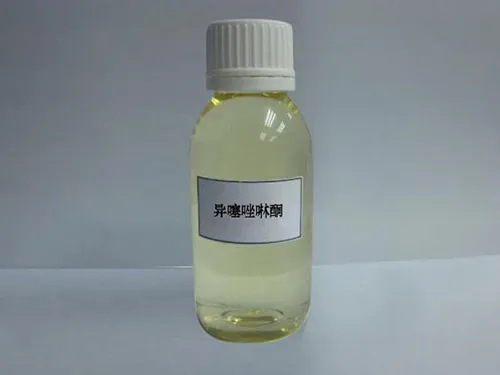Limitations of Isothiazolinones: What You Need to Know
Isothiazolinones, including Chloromethyl Isothiazolinone, are highly effective preservatives widely used in various industries. However, as with any chemical, their application comes with certain constraints. Understanding these potential limitations can help manufacturers and consumers make informed decisions.

Allergen Concerns with Chloromethyl Isothiazolinone
One of the primary limitations of isothiazolinones, particularly Chloromethyl Isothiazolinone, is their potential to cause allergic reactions.
- Skin Sensitization: Repeated exposure to products containing isothiazolinones may trigger skin irritation or allergic dermatitis, especially in individuals with sensitive skin.
- Regulatory Restrictions: Many regulatory bodies have imposed limits on the permissible concentration of isothiazolinones in consumer products.
While their antimicrobial benefits are undeniable, balancing safety and effectiveness is crucial to their use in formulations.
Cost Considerations: Isothiazolinone Price and Production
The price of isothiazolinones can vary significantly based on factors such as purity, concentration, and intended use.
- High-Quality Grades: Variants like Isothiazolinone 1.5are more expensive due to stricter production standards and enhanced purity for specific applications.
- Market Demand: Prices can fluctuate based on global demand for preservatives in industries like cosmetics, paints, and cleaning agents.
While the cost may pose a challenge for some manufacturers, the longevity and reliability provided by isothiazolinones often justify the investment.
Environmental Impact and Degradation Challenges of Isothiazolinones
Although isothiazolinones are effective in combating microbial growth, their environmental impact has raised concerns.
- Aquatic Toxicity: These compounds can be toxic to aquatic life if discharged in significant quantities without proper treatment.
- Biodegradability: The degradation process of isothiazolinones in the environment can be slow, leading to accumulation in certain ecosystems.
Efforts to develop eco-friendly formulations are ongoing to mitigate these environmental risks.
Isothiazolinones: Compatibility Issues in Complex Formulations
The versatility of isothiazolinones is limited by their compatibility with certain products and environments.
- pH Sensitivity: Isothiazolinones perform optimally within specific pH ranges. Highly acidic or alkaline products may reduce their efficacy.
- Interactions with Ingredients: Some ingredients, such as certain surfactants, may react with isothiazolinones, compromising their stability or effectiveness.
Understanding these compatibility issues is essential to ensure that isothiazolinones work effectively within a formulation.
As awareness about chemical safety grows, regulatory requirements surrounding isothiazolinones are becoming increasingly stringent.
- CAS Number Tracking: Products containing compounds like CAS No. 26172-55-4must adhere to specific documentation and labeling standards.
- Consumer Perception: Negative public perception of chemical preservatives can affect market acceptance, despite their effectiveness.
Manufacturers need to stay updated on regulations and invest in transparent labeling to address consumer concerns.
Striking the Right Balance with Isothiazolinones
Despite their limitations, isothiazolinones remain invaluable for preserving and stabilizing products across industries. Challenges like allergen concerns, cost fluctuations, and environmental impact can be mitigated with proper usage, innovation, and adherence to regulations.
Ready to explore premium-grade isothiazolinones for your applications? Visit our website today for the best solutions tailored to your needs!
-
Understanding Polycarboxylic Acids: Properties, Applications, and Future PotentialNewsJul.28,2025
-
Scale Inhibitor Explained: How to Protect Your System from Limescale and Hard Water DamageNewsJul.28,2025
-
Scale and Corrosion Inhibitors: Essential Chemicals for Industrial Water System ProtectionNewsJul.28,2025
-
Polyaspartic Acid: A Biodegradable Polymer for Sustainable ChemistryNewsJul.28,2025
-
Isothiazolinones: A Versatile Antimicrobial Class with Industrial Power and Regulatory ChallengesNewsJul.28,2025
-
A Deep Dive into 2-Phosphonobutane-1,2,4-Tricarboxylic Acid (PBTC)NewsJul.28,2025





